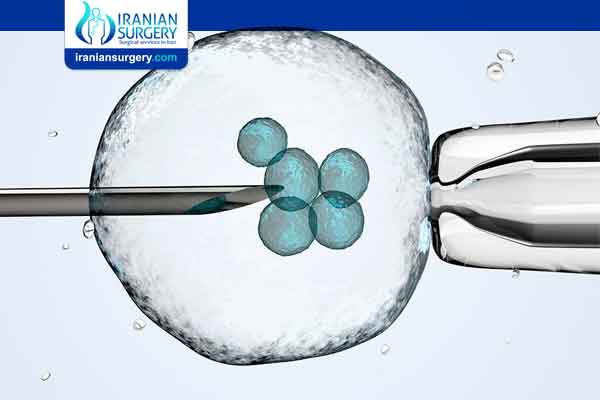Does assisted hatching increase chances pregnancy?

Does assisted hatching work?
Can assisted hatching cause twins?
What does it mean if an embryo is hatching?
Does assisted hatching improve implantation rates?
Is assisted hatching beneficial?
Who should be treated with assisted hatching?
Does assisted hatching increase chances pregnancy?
Assisted hatching is an additional procedure that can be performed in patients who are undergoing in vitro fertilization (IVF) treatment. Once embryos are created using IVF, the embryo is surrounded by a hard outer layer of cells called the zona pellucida. You can think of this outer layer as the “shell” of the embryo. An embryo must break free of this “shell” in order to implant into the uterus and develop into a pregnancy. Assisted hatching is a procedure where we can help the embryo “hatch” from its “shell” by creating a small crack in the zona pellucida. It is believed that assisted hatching can help an embryo implant in the uterus, leading to higher pregnancy rates in some patients.
Read more about : Icsi procedure step by step
Read more about: when is assisted hatching done in IVF
Does assisted hatching work?
Experts do not recommend the use of assisted hatching in all patients undergoing IVF treatments to conceive. Studies suggest that assisted hatching might help improve pregnancy chances for certain groups of patients. Assisted hatching may help improve pregnancy chances in women who have failed to get pregnant in previous IVF cycles and those with a poor prognosis (who are not likely to conceive).

Read more about : Is the IVF procedure painful?
Read more about: Assisted hatching ivf
Can assisted hatching cause twins?
There was no evidence of embryo splitting during the hatching.
Rarely, assisted hatching can damage the embryo, making it unusable. The risk for identical twins might be slightly increased when assisted hatching is applied. Medical complications are higher in identical twin pregnancies than in normal, singleton pregnancies.
Medicines such as antibiotics and steroid hormones are sometimes prescribed around the day of the assisted hatching and embryo transfer. Uncommonly, side effects can occur from the use of these medications.
Read more about: assisted hatching success
What does it mean if an embryo is hatching?
Hatching is the term used when the blastocyst cells start to break through the shell (zona pellucida) of the embryo. Hatching may not always take place but it is a necessary step towards implantation and pregnancy. Assisted hatching is used in some clinics to make a small hole in, or to thin, the shell of the embryo in an attempt to help it hatch. There are arguments for and against this practice. However, most blastocysts are transferred to the womb before they start to hatch with the aim that this will occur naturally.
Read more about: Assisted hatching and embryo glue
Does assisted hatching improve implantation rates?
Assisted hatching has been found to improve clinical pregnancy rate in poor prognosis patients.
But since assisted hatching is a difficult technique, the success is dependent on the embryologist’s experience and technique. It is important to talk with your fertility clinic about how successful they are with the procedure. Assisted hatching is thought to be helpful for some couples with a poor prognosis whose embryos are thought to lack sufficient energy to complete the hatching process.
Assisted hatching may be indicated for women with:
- advanced maternal age (older than 38)
- two or more failed IVF cycles
- poor embryo quality
Read more about: Embryo hatching after thaw
Is assisted hatching beneficial?
Overall, for women starting IVF, 33% have a baby as a result of their first cycle, increasing to 54-77% by the eighth cycle.
- For women younger than 35, the percentage of live births per egg retrieval is 54.5%.
- For women ages 35 to 37, the percentage of live births per egg retrieval is 41.1%.
- For women ages 38 to 40, the percentage of live births per egg retrieval is 26.7%.
- For women ages 41 to 42, the percentage of live births per egg retrieval is 13.8%.
- For women ages 43 and up, the percentage of live births per egg retrieval is 4.2%.
Read more about: Ivf process timeline
Who should be treated with assisted hatching?
The most commonly used indications for assisted hatching with an in vitro fertilization case are:
- Age factor – the female partner is older than 37
- Egg quantity and quality factor – cases in which the woman’s day 3 follicle stimulating hormone (FSH) level is elevated, or with a low AMH level or low antral follicle count.
- Embryo quality factor – cases with poor quality embryos (excessive fragmentation or slow rates of cell division).
- Zona factor – cases with embryos that have a thick outer shell (zona pellucida)
- Previous IVF failure – cases that have had one or more previous failed IVF cycles.
In our IVF clinic, we use assisted hatching for day 3 embryo transfers on just about all cases – because we think it increases the pregnancy and delivery rates.
Read more about: Blastocyst transfer success stories

